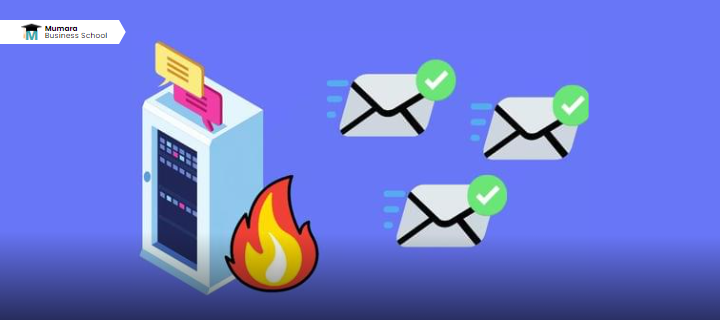Email marketing is one of the best-performing marketing channels for decades. As it is becoming highly attractive for marketers with every passing day, you see many new email marketing terms.
These terms sometimes denote that you are learning a new language, but these are a must for the marketers, and the audience alike to learn them in 2023 for more effectiveness. Some of the email marketing terms possess legal connotations and others may represent trends and technicalities of the strategy.
Email marketing is known to be a platform for bringing the highest – much-needed return on investment. Also, on average, you can earn $42 on every $1 you spent on marketing through email. But still, you have to make sure that you employ the right strategy to harvest the right ROI.
This right strategy also includes understanding marketing terminologies to use the right practices. Feeling surprised or fretted about how to learn this jargon or terms? Don’t be! Even seasoned email marketers keep learning these email marketing terms to keep themselves up to the minute with the latest trends.
If you are looking forward to becoming an email marketer in 2023, and want to learn all the relevant email terminologies, you are at the right place.
In this article, we shall inform, you and explain the email marketing terms in detail, and you can use this guide whenever you want. Let us get started!
Table of Contents
- Email marketing terms for the email marketers
- Bounce rate
- A/B testing
- Autoresponders
- Landing page
- CAN-SPAM
- Bulk email
- Call to action (CTA)
- Marketing automation
- Double opt-in
- Single opt-in
- Opt-out
- Email campaign
- Whitelist and blacklist
- Image blocking
- Email service provider (ESP)
- Email list
- Email templates
- Dedicated and shared IPs
- IP warmup
- Sender score
- Newsletter
- Email personalization
- Email Signature
- False positive
- Email deliverability
- Response rate
- Sender policy framework (SPF)
- Email list hygiene
- Welcome email
- GDPR
- Final words
30 Email Marketing Terms for Email Marketers
Here are thirty email marketing terms discussed that will accompany you throughout your journey to becoming a seasoned email marketer.
Read them one by one:
1. Bounce Rate
When we send email campaigns to the users, some of the emails get delivered to the mailboxes, some land in the spam folder, and others don’t deliver to the users. These undelivered emails are called bounced emails.

These email bounces can be soft bounce or hard bounce. A soft bounce is when the email is not delivered to the user temporarily such as a full mailbox, or issue with the recipient’s server.
On the other hand, a hard bounce is a permanent error and your email will not be delivered to that address. A hard bounce occurs when you send an email to an email address that doesn’t exist.
2. A/B Testing
A/B testing or split testing is comparing the results of 2 different email variants to find the best one for the audience. You can test various factors such as subject lines, opt-in forms, and CTAs to understand the behavior of the recipients.
Suppose you design an email campaign with the inch-perfect copy, but it doesn’t get clicked, your efforts will go down the drain. Here, A/B testing gets you covered.
Testing more than one variant will tell you about the results and which one performs better, and brings more opens. When you get the winning version, you can send it to the rest of the list for more opens and clicks.
3. Autoresponders
Autoresponders are automated messages or a series of messages that are sent to the users based on a typical action. Further, sometimes, users receive these types of emails with a specific action, and sometimes they receive it as a reply in an automated scripted manner. The autoresponders are used for various purposes, confirmation email is one of them.
4. Landing Page
A landing page is a page where the users land and provide their email ids. Also, landing page, as it is clear from the name that there is some page where you will be landing after clicking some link. It can be used to showcase specific products or services.

This page is always different than the home page of your website. A landing page is a distraction-free page where users see the only product they clicked for. If you place more products, or services on that page, there are more chances that the visitor’s attention will be distracted and they will make no purchase.
There are many tools such as Mumara that offer landing pages that can be used to multiply the leads and sales.
5. CAN-SPAM
CAN-SPAM stands for Controlling the Assault of Non-Solicited Pornography and Marketing. It is an act that was enforced in 2003 by the United States that halts the business to send deceptive emails.
CAN-SPAM dictates that businesses must follow the rules before sending commercial emails. It also states that the sender is binding to provide the recipient with an unsubscribe link so that he may get out of your email list if he feels not interested anymore.
6. Bulk Email
Bulk emails are large-scale promotional emails that are sent to a larger email list with the same content. These emails are sent at once to all and sundry, sometimes, without creating any segment on the email list. Newsletters and update emails are examples of bulk emails.
7. Call to Action (CTA)
A call to action or a CTA is mentioned in the email to guide the recipient to what action to be taken. A CTA can be about purchasing, signing up, requesting a demo, or starting a free trial.
Call to action is can be placed anywhere in the emails, but most of the time it is present at the end of the email or a place where you encourage the users to take some action.
When we open up an email, we often see a button or a link saying “Click Here”, which is basically a call to action.
8. Marketing Automation
Marketing automation has different spectrums in the world of marketing. When we talk about email, it means that email marketing automation is done through an email marketing automation tool/software.

When you use these tools such as Mumara for your email marketing automation process, you can create an email list, segment the list, design a beautiful email campaign by yourself, or select a readymade template, and send email campaigns to the audience of your choice.
Further, you can use tracking pixels to monitor the activities of your visitors to target them more precisely. You can engage your audience through the predefined triggers and help them complete the checkout process.
9. Double Opt-in
A double opt-in email is an email address that subscribes to your email list purposefully. It means that, for example, you run a blogging website, and a visitor visits you and likes your content.
He may think to subscribe to your newsletter and mention his email address. Before giving him a place in your email list, you ask him to verify the email address through a confirmation link, this is called double opt-in. This process ensures that your email list doesn’t contain any false or typo email addresses.
10. Single Opt-in
Unlike double opt-in, single opt-in is a process where users do not need to verify the confirmation link. In this process, the user automatically subscribes to the email list, and the newsletters when they mention an email address and hit the “Sign up, or Confirm” button.
The users you get from the single opt-in are the least interested users because they didn’t take any pain to subscribe to the mailing list. moreover, you can receive more bounce rate on these email lists because the subscribers may commit some typos during the subscription process.
11. Opt-Out
Sometimes a user signs up to your email list unintentionally or mistakenly, he has a right to leave the email list to not receive any emails from you. This could be the user’s personal choice to be on the list or not, or if decides to leave the list, it is called opt-out.
CAN-SPAM act dictates that you are bound to provide an unsubscribe link in the email that must facilitate the email recipient to leave your email list.
Not only this, even if someone subscribes to your email list willingly, he has all the rights reserved to leave your mailing list whenever they want. Also, here you can raise the question that what will happen if you don’t mention the unsubscribe link. The answer is quite simple; the users will report your message as spam which will degrade your reputation in a long run.
12. Email Campaign
An email campaign is a series of email marketing efforts that drives users to a specific goal. Also, a successful email campaign is one that contains relevant content and offers for the users, that drive more sales.
13. Whitelist and Blacklist
Whitelisting is when the recipient wants to hear from you in the future by listing your email as important. Whereas, blacklisting is when the user finds something suspicious in your email list and blacklists you to avoid receiving any messages in the future.
14. Image Blocking
Due to default settings in the email client, users can’t see any image present in the email to save data, and these images get blocked automatically.

Although this factor is in the favor of the recipient to some extent as they can save data, and time, but not suitable for the marketers as they can’t communicate with the audience perfectly. Also, that is one of the reasons marketers prefer to send text-based emails instead of including any images.
15. Email Service Provider (ESP)
An email service provider or ESP is a platform that provides email services, such as Outlook, Yahoo Mail, Gmail, etc. Good ESPs facilitates you to create your email list, access email templates, and send emails to the users. Along with it, you can track the effectiveness of your email campaigns by viewing the stats, i.e., open and clicks, etc.
16. Email List
An email list is a collection of email addresses or users with a piece of certain information such as names, professions, locations, etc. An email campaign can be sent to all the users at once or you can segment it as per your needs.
17. Email Templates
Email templates are ready-to-use patterns that can be used to send an email. These templates come up in different variations and are editable to produce your own or brand information to make them all yours.
18. Dedicated and Shared IPs
In email marketing, dedicated IP means an IP address that is used only by you to send an email. On the other hand, shared IP is one that is used by more than one sender.
19. IP Warmup
Before sending your emails from the new IP, you need to warm it up so that it might not get the attention of the spam filters. It means that you need to start sending emails from a few numbers and increase them gradually.

For example, from the new IP, if you send 10 emails today, you should send 15 or 20 by tomorrow, and so on.
20. Sender Score
The Sender Score is also called Email Sender Reputation and it is a rating that an ISP (Internet Service Provider) assigns to a sender ranges from 0 to 100. Sender Score decides the destination of your emails, whether to land in the mailbox or spam folder.
If you have a high sender score, there are more chances to land in the inbox of the recipient. If the situation is otherwise, you will be found in the spam or junk folder.
21. Newsletter
A newsletter is an update or a bulletin that you regularly send to your users to keep them informed. Many organizations use the newsletter to keep themselves alive in the hearts of the users and tell them about what the NEWS is from the organization’s side.
22. Email Personalization
Today, generic emails are becoming a thing of the past. More than 70 percent of the people expect to receive an email actually made for them. Here email personalization serves the purpose.
In a personalized email, the sender sends the email by calling the recipient with his name. Email personalization gives a sense of “feel at home.”
23. Email Signature
An email signature is the sender’s or organization’s contact details that are shown at the end of the email in a block of text. The email signature is also called Signature File which identifies professional information about who is sending the email.

An email signature is becoming the talk of the town that is being used by various companies to leave a fine brand impression on the recipient of the email.
24. False Positive
A false positive is an email that is falsely identified as spam by the Spam-blocker. This is basically a legitimate email that needs to be landed in the inbox but is caught by the spam filter incorrectly.
25. Email Deliverability
Email deliverability is the landing of the email in the mailbox of the user. Many factors are counted for email deliverability as listed below:
- Email subject line
- Email copy
- Text into image ratio in the email
- Sender reputation
- Using a single opt-in email list
- Email is not responsive for desktop and mobile alike
26. Response Rate
The response rate is also called the reply rate. It is the percentage of the users that respond to your email.
27. Sender Policy Framework (SPF)
A sender Policy Framework or SPF is an email authentication used by trusted users to avoid spam folders. SPF is a technique where emails are sent on the behalf of a domain.

When you send emails from the authenticated domain, spam filters recognize them as legitimate instead of fraudulent.
28. Email List Hygiene
It is not enough to build your email list and keep sending email campaigns to those subscribers. Over time you have to clean your email list which is called email list hygiene. Through this process, you clean out the uninterested, passive, unsubscribes, and spam complaints from your list to maintain the sender’s reputation and to keep landing in the mailbox of the users.
29. Welcome Email
A welcome email is the first email that your subscriber receives from you as soon as he subscribes to your mailing list or service. This email acts like a confirmation email that the subscriber has been taken on board, and he will receive further emails accordingly.
Around 64 percent of the users expect to receive a welcome email when they subscribe. Along with it, a welcome email is one email that initiates a two-way communication process between an organization, and the user.
30. GDPR
GDPR or General Data Protection Regulation is a law for the sender to send emails to European users. Also, this law is related to protecting personal information, and it dictates the senders make sure that they will not be sending spam.
Final Words
In the end, we would say that email marketing is one of the most powerful platforms of marketing known to marketers. They help you grow your business with a better return on investment.
Email marketing is not doable unless you don’t understand email marketing terms. Further, in the above-mentioned lines, we have covered almost all the email terminologies you will be needing in your journey to become a seasoned email marketer.
Also, you will need a reliable email marketing automation tool like Mumara to design your email campaigns after knowing these email marketing terms.
Get started today to give a boost to your business.
Click for more Email Marketing Blogs.






Add comment